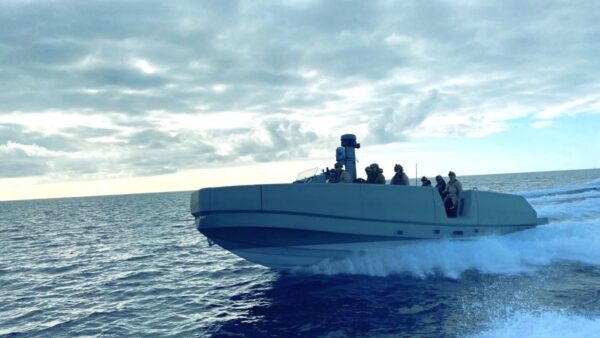With a precious few exceptions, this year’s annual top 100 manufacturers report does not make easy reading, as Alan Johnson reports.
The manufacturing industry has always been an extremely competitive industry, and that trend shows no sign of abating in the near future.
While not dramatic, the slow decline of Australia’s traditional manufacturing industry looks set to continue, with a disappointing number of winners in this year’s manufacturing report.
Nick Tarrant, Senior Industry analyst with IBISWorld, one of Australia’s richest sources of business information, says most of the manufacturing sectors are struggling, and declining around 2% to 3% a year, on average.
He admits it’s not a huge decline, and says there is a lot of volatility depending on prices.
“Most of the companies that have dropped their revenue in the Top 100 list has been due to volatile factors, but the trend is downwards,” Tarrant told Manufacturers’ Monthly.
He said the only exception was the food and beverage sector, with most companies in the sector still growing.
“This is mainly due to Australia’s strong agricultural division, and strong demand for Australian food and beverages such as the wine sector which we expect to grow 7.1% this year to reach $6.2bn.”
Tarrant says the reason for the wine industry’s outstanding growth is twofold, strong export demand coupled with the lower Australian dollar.
“But also Chile and Argentina have had poor harvests this year, and have struggled to meet demand; with Australia picking up the slack.
Tarrant admits the lower Australian dollar has improved the global competitiveness of local manufacturers, but says most overseas manufacturers operate with far lower overheads and wage costs which make it difficult for Australian manufacturers to compete.
However, the good news is that the value of our dollar is not expected to change much over the next five years. IbisWorld is forecasting little change over the next five years, predicting it will only appreciate marginally to 77c against the US greenback.
With the general trend downwards, Tarrant says we can expect to see further consolidation of companies within the top 100 manufacturers list.
“Even with the food industry included, the overall trend is of the manufacturing industry going backwards.
“So I expect to see this consolidation trend to continue, especially in the struggling sectors of the manufacturing industry. Anything that can cut costs, and streamline operations.
Winners
But it’s not all gloom and doom, there are some outstanding results in this year’s list of top 100 manufacturers.
Raytheon for example, the defence construction contractor, recorded a stunning 93.96% revenue growth on the back of a high increase in construction contracts coupled with changes to its contract clauses with the Australian Defence Force (ADF) Air Warfare Destroyer program.
They now have an incentive fee structure that ties their performance to what they receive on that contract. Almost doubled their revenue because of that.
But it’s also because of the industry they are operating in. The Australian government has recently increased its defence expenditure to 2% of GDP.
The huge submarine contract, worth something like $50bn, that’s going to benefit a lot of ship builders as well as companies who supply parts and equipment that are used in these huge defence projects.
One of the more interesting winners in this year’s Top 100 manufacturers feature is the specialised explosives manufacturing industry, with companies like Orica and Downer taking advantage of a substantial increases in coal prices.
With the price of coal rising 200% in the past three months, production is being ramped up in Australia many coal mines are being re-opened and a substantial increase demand for specialised explosives used to clear overburden in coal mines.
In fact, half the demand for explosives comes from coal miners. In line with this, the explosives industry is expected to grow by 5.2% in the coming year to reach $3bn.
While the mining equipment manufacturing sector has declined considerably year on year since 2013, Tarrant says the industry may have bottomed out and is now predicted to turn around over the next five years or so. The worst may well be over for this sector.
Second on this year’s top 100 list of manufacturers is Viva Energy, which recorded a substantial increase in revenue (165.94%) from the sale of goods, and in August 2014, the company acquired Shell Australia and renamed Viva Energy Australia Group.
Readers might ask why the Perth Mint is on the list, but its position and positive results are due to Australia being the second largest gold producer after China, plus the mint’s new silver coin blanking facility began operating allowing coin and mint production to triple.
Three companies in the growing healthcare sector had outstanding results this year.
Blackmore increased it revenue by an outstanding 51.7% mainly due to high demand for Blackmore products in Asia, with sales boosted by Chinese tourists and exporters. As well the company acquired Global Therapeutics which contributed $3m to revenue.
Cochlear also recorded a positive result, increasing its revenue by 23.09% mainly due to a strong focus on customer and market growth activities and by rolling out a suite of products.
At the same time, Fisher & Paykel Healthcare increased its revenue by 21.7% with both Respiratory and Acute Care (RAC) and Obstructive Sleep Apnea (OSA) humidification products performing well due to demand in hospitals and home settings.
Gaming machine manufacturer, Aristocrat Leisure, also had an outstanding year, with revenue increasing 89.42% due to strong growth in the Asia Pacific due to interest in gaming operations, and strong ship share gains across all key markets as well as a more favourable product mix which included enhanced content and the release of Helix cabinet.
Beef producers, Australian Agricultural Company (AACo) and Teys Australia (a Cargill joint venture), also had successful years.
AACo sales revenue increased 38.43% mainly due to high demand from global markets for the company’s produce, with beef sales increasing in the USA and South Korea, plus a new strategy and improved operations positioning the company as a premium producer in international markets.
Teys Australia increased its revenue by 21.68% with demand for beef and strong cattle supply and good weather conditions contributing to increase in production of stock.
Losers
Australia’s steel industry is one of the hardest hit industries this year, with Arrium going into voluntary administration, who held around 20% of the market, with the remaining players struggling against Chinese imports,
Other problems for the industry is the decline of automotive manufacturing in Australia, which is a key downstream market.
However, Tarrant does not necessarily believe the steelmaking industry demise is set in stone, as Australian manufacturers are still keen to source steel products from Australia, especially it’s almost custom made for them, and they can rely on the quality of the steel, unlike a lot of the imported steel.
“With Arrium in voluntary administration, the industry has declined by 7.9% this year, but at $9.1bn it is still a substantial industry.”
Tarrant believes there is always going to be a place for the steel making industry in Australia, especially now the government has indicated they want to use Australian steel in the upcoming submarine contract.
“There is always going to be local demand, it’s just that it’s not always consistent as the industry bottoms out and starts up again.
“Also, the steel industry is not as concentrated as some of the other industries. There are still a large number of small players that supply to construction firms,” Tarrant explained.
Another industry suffering from concerted import competition is our aluminium industry, which is set to decline by 5.9% this year to $1.2bn, down from a peak of $2.3bn a decade ago.
Despite the lower Australian dollar, imports now account for 60% of domestic demand.
“China produces around half of the world’s aluminium, but smelting and the main inputs into aluminium production are heavily subsidised by the Chinese government, which is providing Chinese competitors with the cheap supply of raw materials such as aluminium billet.
Plus, in December last year, the China/Australia FTA eliminated a few of the tariffs on aluminium products.
Over the past couple of years there has been allegations of dumping aluminium products to the Anti-Dumping Commission, which has been upheld and a lot of Chinese companies have been hit with extra tariffs on aluminium products.
“While this provides some relief from the Chinese importers, it is not as severe as what other major buyers of aluminium, such as the US and Canadian governments who have much higher anti-dumping rates on Chinese made products.
The interesting thing with this industry is that labour/wages is not a major component, it’s is mostly energy the main input.
Unlike other manufacturing industries where labour costs are the biggest input where China and other low cost labour countries have a natural advantage there, but in Australia’s aluminium industry wages make up around 12% of the total cost, with energy costs which include gas and electricity is around 60%.
Australia’s aluminium industry is finding it difficult to compete with these heavily subsidised products, and is why the Australian Government, via the Anti-Dumping Commission, has stepped in.
The Government will also be looking closely at the revenue figures of it fully owned Australian Submarine Corporation (ASC).
The figures look very ordinary, with annual revenue down 22.9%, mainly due to the end of a couple of projects, and Air Warfare Destroyer contract being pushed back.
Tarrant says this is always a problem with the ship building industry and any of those industries that rely on government contracts.
“Their revenue figures are extremely volatile year to year, because once the contract finishes, and they don’t have another contract to start straight away, they have to cut back on staff and other areas.”
However, as Tarrant points out ASC’s NPAT has increased and the company has delivered positive results, plus it exceeded the agreed submarine Material Ready Day (MRD) targets with the Royal Australian Navy and completed HMAS Farncomb’s two-year Full Cycle Docking (FCD) contract.
While the food industry in general is travelling very well, there are some outstanding exceptions in this year’s top 100 list.
The milk powder manufacturing industry is one example. Back in the 2014 financial year, revenue of the milk powder industry was around $1.7bn, but this financial year it has fallen to $757m and is expected to fall even further in 2016/17; down 12.2%.
Most of the milk powder, used for baby food for example, we produce (90%) is exported, mainly to Asia; China, Indonesia, Malaysia, Singapore.
China is the biggest market, making up around 20% of revenue. The industry is extremely reliant of that section of the market.
NT says, export volumes have been very volatile for the past couple of years due to weather conditions and pricing.
However, in the past couple of years the powder prices have plummeted, probably since mid-2013.
The reason for such dramatic falls is due to powder prices tied to the price of milk, which has been steadily falling, and stiff competition from overseas.
The two major players are Fonterra and Murray Goulburn, which has had some issues this year. While Fonterra is heavily exposed to international trade. Both are struggling this year.
The other major player is Warrnambool Cheese & Butter, and together they make up 90% of the industry.
While the figures for Warrnambool Cheese & Butter show a substantial increase in revenue (43.79%), this growth was partly due to the acquisition of Lion-Dairy and Drinks.
The everyday cheese business contributed $160m, and includes COON, Cracker Barrel, MilLel and Fred Walker brands.
The other reason for the revenue increase was Warrnambool Cheese & Butter’s Japan joint venture which has also expanded the business and has helped offset low commodity prices
Another industry normally associated with positive balance sheets is the oil and gas industry, however this year appears to be an exception with BP Australia, ExxonMobil Australia and ConocoPhillips Australia going backwards.
BP Australia suffered a substantial decrease in sales and other operating revenues (down 29.24%) mainly due to the disposal of its bitumen operations in Australia in August 2015, plus the company closed its Bulwer Island Refinery, which will be converted into a jet terminal.
The refining operations stopped in May 2015 and resulted in staff redundancies and the discharging of some assets.
“However, the company also plans to enter non-operating joint venture in fuel distribution operations in Australia.”
ExxonMobil Australia also suffered a decrease in revenue (down 21.5%) which was mainly due to lower average prices for saleable products rather than a decrease in sales.
In fact, the company’s sales have been constant as it continues supplying 40% of Eastern Australia’s natural gas and 50% of Victoria’s automotive and aviation fuel.
ConocoPhillips Australia, which is involved in the natural gas processing and production of Liquefied Natural Gas (LNG), faced worsening economic conditions coupled with a weakened price outlook which resulted in significant impairments on the books (revenue down 30.43%).
Also, between 2010-2015, the company had to pay tax assessment and penalties to Timor-Leste which cost $240m.
Other companies recording drops in revenue include Sims Metal Management and Siemens Australia.
For Sims Metal Management, the decrease of sales revenue (down 26.56%) is due to lower sales volume and lower average scrap metal prices.
Also, average selling prices for ferrous and non-ferrous metals decreased due to the external operating environment, which includes China’s excess production of steel being exported into the international export market at high levels.
For Siemens Australia, the transition of the mining sector from investment to production and the postponed infrastructure projects in rail and power generation explains the decrease in revenue by 41.22%.
For more information or interviews, go to http://media.ibisworld.com.au/contact-us/


